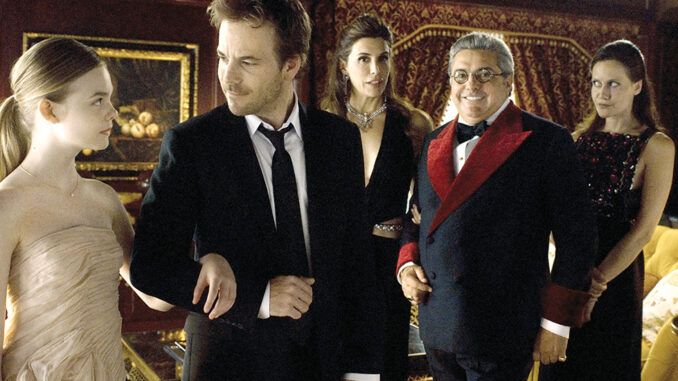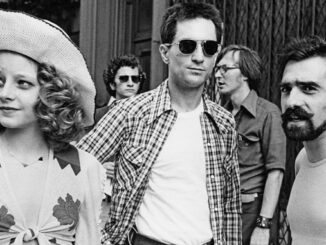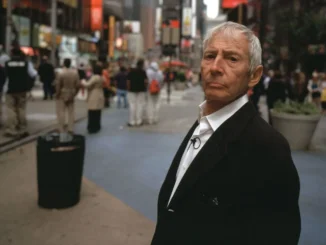
by Maureen Foster
When Sofia Coppola’s Somewhere was released, I was out of town, and I knew I’d rush to see it the moment I got back home. But by then, it was playing only at the Summerfield Theatre in Santa Rosa, about two-and-a-half hours from where I lived in Santa Cruz. I was determined to see the newest film by my favorite director in a cinema — a DVD on a small screen was out of the question. Because I was hell-bent, this five-hour pilgrimage to a place I’d never been, under a sky of rippling 100-degree heat, took on a mythic quality. Yet I didn’t know that the film I was about to see would forever change the way I approached my writing.
Somewhere opens on a black Ferrari taking lap after lap around a racetrack until, finally, Johnny Marco (Stephen Dorff) stops the car, gets out and stares into space as if to say, “Now what?” Next he drunkenly falls down the stairs at the Chateau Marmont, where he lives, giving his party friends a good laugh. The identical-twin pole dancers he hires to entertain him as he lies in bed with an arm cast inspire in him something between politeness and boredom. At a party, he lures a woman to bed and while they’re having sex, he passes out. In these opening episodes Johnny’s life is summarized: falling down, passing out, going around in circles without joy or purpose.
During the weeks and months after seeing Somewhere, which has become my favorite of Coppola’s splendid films, its effect upon me was profound.
When he awakens to his 11-year-old daughter, Cleo (Elle Fanning), signing his cast, her mother Layla (Lala Sloatman) announces that she’s dropping Cleo off to live with him, and the film follows Johnny’s emotional journey as he tries to get closer to the daughter he barely knows. It doesn’t look promising in the next scene at her ice skating rehearsal, when, while Cleo glides around the rink — as the sound and lyrics of Gwen Stefani’s “Cool” peek into her psyche, and the cool blue of the surrounding light captures her movements like an underwater ballet — Johnny sits far up in the stadium, engrossed in his text messages. But by the end of the scene, he focuses on the person who will help him save his own life…although he doesn’t realize it yet. The setting aside of his phone, with its messages from the toxic world he inhabits, foreshadows the film’s surprising finale.
During the weeks and months after seeing Somewhere, which has become my favorite of Coppola’s splendid films, its effect upon me was profound. There are many detailed reasons for this but I can sum them up in two words: content and style. Many years before Robert McKee’s “Story Seminar” was nationally acclaimed, it was 20 or so aspiring screenwriters in a classroom in Santa Monica. From McKee’s class I share this axiom: Know your world as God knows this one. Coppola does, and her films are imbued with her insight into, and empathy for, celebrity and its perils. In her last four features, her protagonists are a waning movie star (Lost in Translation, 2003), a teenage girl who becomes queen of an empire (Marie Antoinette, 2006), a troop of kids who rob homes of the rich and famous (The Bling Ring, 2013), and Johnny Marco in Somewhere.
Coppola’s intimate connection to the content of this film is what delivers its truth. If we didn’t know her background, we would still sense that her understanding of her subject, by whatever means, is profound. I had been struggling with adapting a novel of mine into a screenplay when I realized that, after seeing this film, I needed to look deeper into my heart and my own experience to discover what the story was really about. If I had to choose only one word to describe what makes any film wonderful for me, it would be truth.
Sarah Flack, who edited Coppola’s last four features, also knows when not to cut.
Coppola’s filmmaking style has much to do with beauty and, as exemplified in the ice rink scene, depends minimally on dialogue in favor of cinematic elements such as time. For example, an unwillingness to cut away from tedium connects us to the void in Johnny’s life, and allowing the skating scene to fill the length of the song has much to do with that scene’s impact and the film’s sense of realism (Sarah Flack, who edited Coppola’s last four features, also knows when not to cut). Sumptuous visuals and the emotion of music also carry the story.
As a novelist, I’ve always been heavily invested in verbal narrative (it’s the bane of all fiction writers transitioning to the screen) and witnessing how seductive a scene can be with no language at all was a revelation to me. I saw in Somewhere an aesthetic so powerful in its subtlety — a standard I wanted to aspire to in my own work. More than this, it transformed my appreciation for a filmmaker’s unique choices, and changed forever the way I look at movies.




